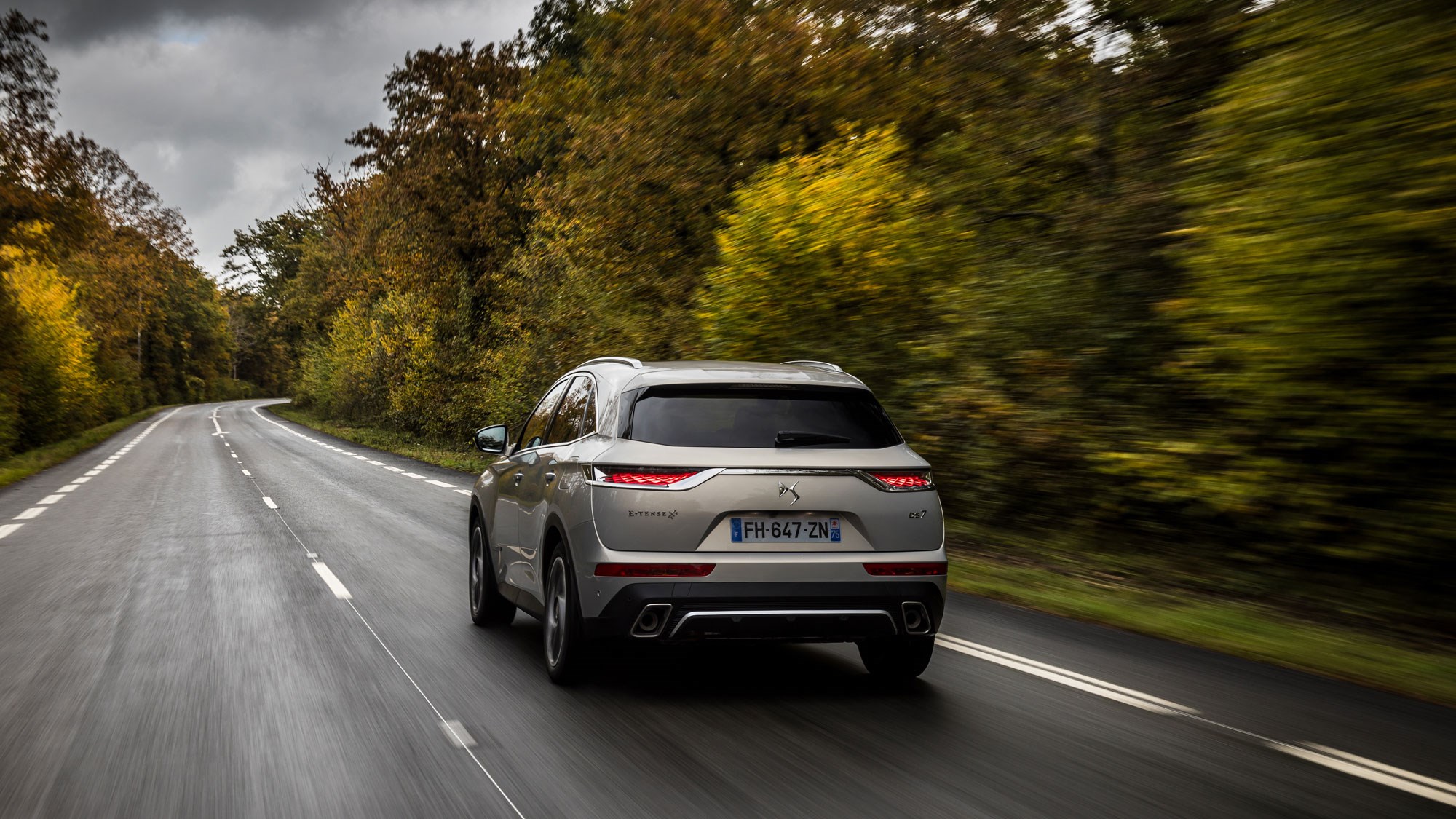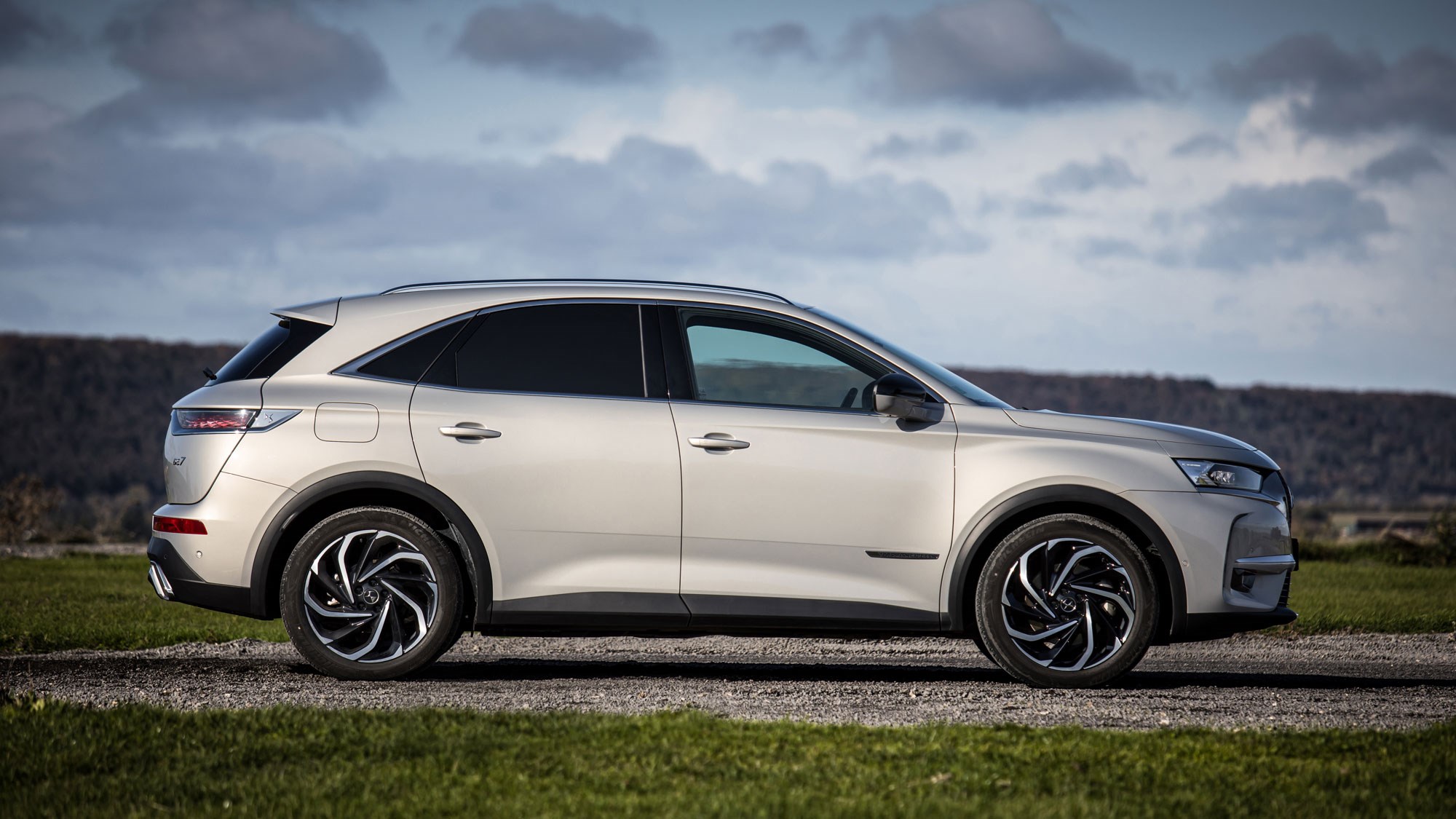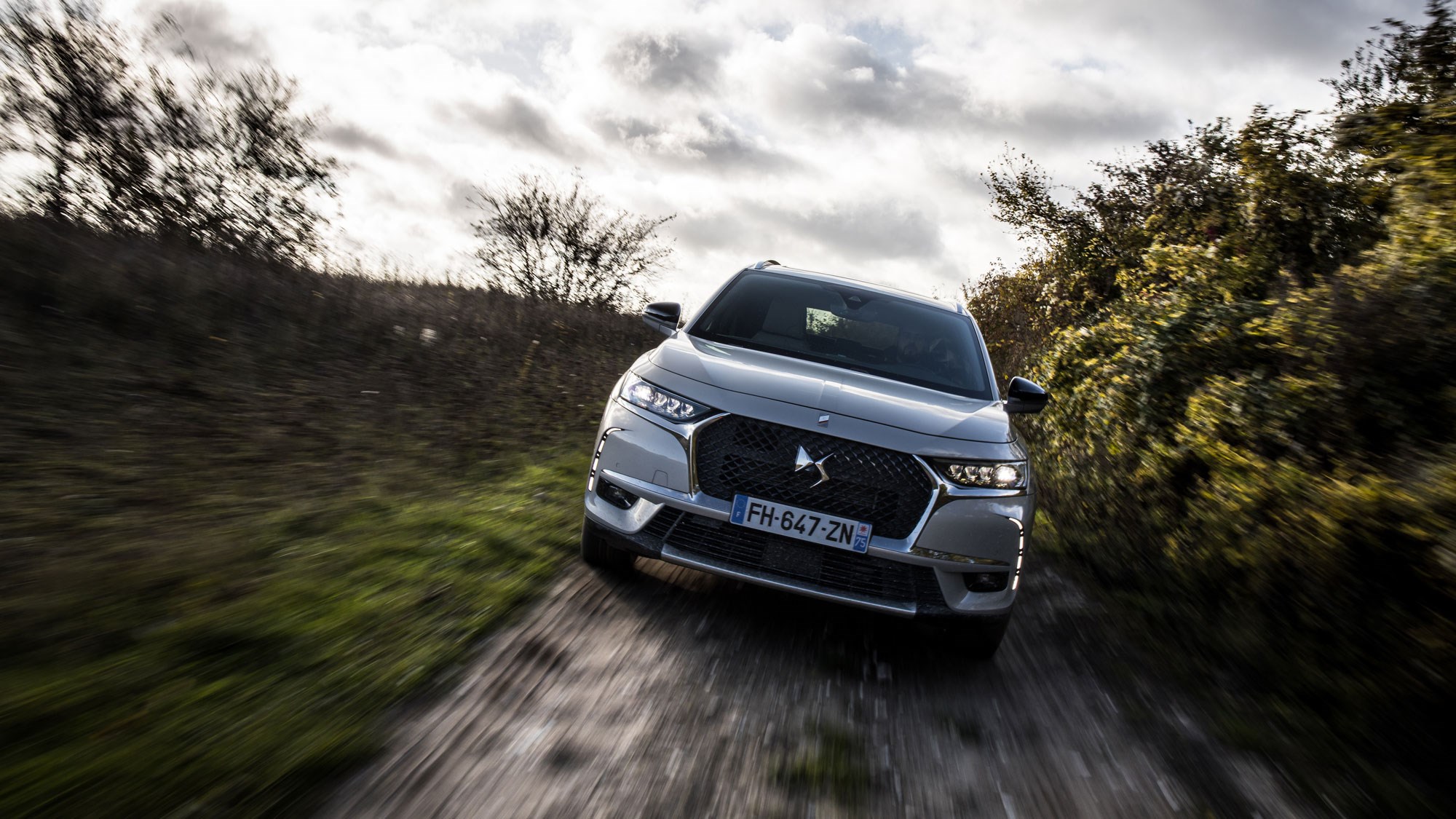► It’s a hybrid!
► Based on PSA’s EMP2 platform
► As comfy as you’d expect
Such are the tribulations of building a new brand that it’s worth a quick re-cap on DS Automobiles before CAR’s test drive of the new DS 7 Crossback E-Tense. So, deep breath… the brand sits under the PSA (Peugeot, Citroën, Vauxhall, Opel) umbrella and its genesis came with the radical Citroën DS of 1955; the name was dusted off for the Citroën DS3 hatchback in 2010, became a standalone ‘premium’ brand in its own right with the DS4 and DS5 from 2015, and by 2025 DS Automobiles plans to sell six models, all of them either plug-ins or pure electric, which DS calls E-Tense. Oh, and DS just won drivers’ and makers’ titles in Formula E.
Today, DS sells just two models, both of ’em crossovery SUVs – the small B-segment DS 3 Crossback, and the DS 7 Crossback that straddles C- and D-segments.

The introduction of the DS 7 Crossback E-Tense means both are available as electrified E-Tense variants. The DS 3 E-Tense is a pure electric car, but the DS 7 E-Tense we’re driving is a plug-in.
So what’s the specs?
Like all DS 7s, the E-Tense is based on PSA’s EMP2 platform, the same you’ll find under its larger cars, including Peugeot’s 3008 Hybrid4, which is particularly relevant. The DS 7 is almost 100mm longer than a 3008, but the two cars share the same electrified drivetrain when you order the toppiest spec.
Best hybrid cars
There’s a 1598cc turbocharged petrol engine that’s good for 197bhp, just as some other DS7 models. But the E-Tense adds both a 108bhp electric motor at the front, and another integrated to the rear axle making the same power. That means all-wheel drive (you have to get the E-Tense if you want an all-wheel drive DS 7) with no propshaft linking front and rear, though the DS 7 actually defaults to rear-wheel drive whenever it can in pure electric running, because there’s no gearbox on the rear axle, therefore less mechanical drag, therefore more efficiency.

There’s also a pretty small (as is normal for plug-ins) 13.2kWh lithium-ion battery, which DS says takes two hours to charge from a 6.6kW charger, or eight hours using a three-pin socket. Deceleration or braking can regeneratively top up the battery too.
The upshot is a total system output of 296bhp with 332lb ft, up to 31 miles of pure-electric running at speeds as high as 83mph, plus 128.4mpg and 33g/km C02, certified on the new WLTP test protocol. The plug-in drivetrain adds 300kg (basically four Formula E drivers) to the kerbweight, with DS quoting a 1825kg E-Tense kerbweight.
The bulky hybrid drivetrain makes no impact on either passenger or boot space, though the 42-litre fuel tank has been made 20 litres smaller than a regular DS 7 to package the battery. Keep the battery topped up and do small trips and this will matter little, though clearly the opposite is also true.

There are four driving modes: Zero Emissions, Sport, Hybrid and 4WD.
What’s the price?
Ah yes, there is that. The DS 7 Crossback E-Tense costs from £47,725 in base Performance Line trim, rising to £50,725 in Prestige and £56,075 in top-of-the-range Ultra Prestige. That’s some £9.5k more expensive than the BlueHDi diesel variants, if just under £1k more than the hybrid Peugeot.
What’s it like inside?
It feels pretty special actually. The seats not only look highly attractive and are pleasingly low set, but have a deep, luxurious squish of comfort as you sink into them. You can spec them in Nappa leather, which looks and feels suitably luxurious, but the sportier Alcantara of Performance Line models is also fabulous. The same material extends to the steering wheel and dashboard, and there are other nice touches too, including metal finishes for the drive-mode selector and electric window controls.

You also get a large 12-inch central infotainment screen and 12.3in digital instrument binnacle – some of this prioritises flash over function, but you soon fathom it out and the graphics add to the slick, modern look of the cabin.
In the back there’s just enough space for a six-feet tall adult to sit comfortably behind another, and while the boot floor is relatively high, there’s also another hidden compartment below it. Total boot space is quoted at 555 litres below the parcel shelf.
How does it drive?
With the battery fully charged and either Zero Emissions or Hybrid mode selected, the DS 7 is impressively refined on the French autoroutes we first tested on near Paris. The ride has a supple plushness comparable to the 508 saloon, with a lovely long-legged feel and nicely controlled damping – the DS 7 is the only PSA product that uses a camera to scan the road surface and proactively adjust the damping to suit –though it’s a little lumpier at low speed in town.
Road- and wind-noise is very well suppressed at higher cruising speeds (the DS7 gets thicker side and rear window glass than PSA siblings), and the overwhelming sense is of calm and isolation. The four-cylinder petrol does of course detract from that when it wakes up, but it’s far from intrusive. We noted a couple of thunks here and there as the drivetrain transitioned, but only on occasion rather than consistently.
This is not a particularly dynamic car on more challenging roads. Acceleration is urgent enough considering the chunky kerbweight, and there’s certainly plenty enough on tap to get a shift on, with impressive flexibility throughout the rev range. But body roll and weight blunts the fun, and the feel-free steering switches between wishy-washy in Hybrid to a stickier, heavier feeling around the straight-ahead in Sport.

It’s also impossible to lock the automatic transmission in manual mode, making it tough to strike up a quick, smooth rhythm over twistier roads. Wind back the pace a little, as most owners will, and the DS 7 will prove a comfortable, quick and competent enough companion.
A couple of muddy off-road laps (on winter tyres) in 4WD mode proved the DS 7 should be able to claw its way from a muddy Glastonbury car park, though it’s no Land Rover.
Verdict
The case for the DS 7 Crossback E-Tense includes its impressive ride comfort, lack of road- and wind-noise, and its sense of calm when driven in pure electric mode – something it’s able to do at motorway cruising speeds for decently long periods. Interior materials, comfort and technology also add to the feeling of luxury. Business users will also enjoy benefit-in-kind savings.
The case against includes a high price, derivative PSA components and the fact that it’s not particularly engaging on a twisty road. But if you’re a business buyer doing a typical commute and wanting to both reduce your tax and stress levels in an SUV that isn’t German, there are plenty of reasons to recommend the DS 7 Crossback E-Tense.